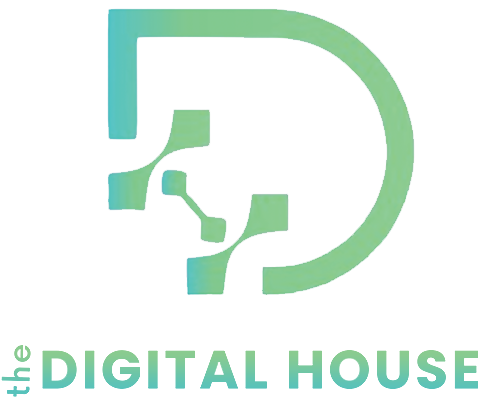Introduction
Creating great content takes time. But what if you could use that content more than once?
That’s where content repurposing comes in. It means taking one piece of content and turning it
into different formats. A blog entry, for instance, can be transformed into a podcast, video, or
social media post.
Repurposing is not just about saving time. It helps you reach more people. Not everyone reads
blogs. Some prefer videos. Others like quick tips on social media. By sharing your message in
many ways, you meet people where they are.
This strategy is great for marketers, business owners, and content creators. It helps keep your
content fresh without always starting from zero. You don’t need to create more content. You just
need to use what you have more smartly.
In this blog, we will show you how to repurpose content the right way. We will cover what
content to choose, how to break it down, and where to share it. You’ll also learn tips to stay
organized and tools that can help. By the end, you’ll have a plan to get the most out of every
piece of content you make. Repurposing is about doing more with less. It helps amplify your
voice and extend your brand’s reach. Once you learn the basics, it becomes a natural part of
your content marketing strategy. Let’s look at how to maximize what you currently have.
- Choose the Right Content to Repurpose
Not all content is worth repurposing. Start with your best-performing content. Look at blog posts
or videos that got high traffic, shares, or engagement. Evergreen content is ideal—these are
topics that stay relevant over time. They can keep bringing value to your audience months or
years later.
To identify your best content, use technologies like social media insights or Google Analytics.
Select a single component and determine the forms it can be converted into. The objective is to
breathe new life into your best material. Always take into account content that resolves issues or
provides answers to frequently asked queries. These pieces tend to work well in multiple
formats. Keep a list of your top-performing posts so you can easily come back to them. - Break the Content Into Parts
Long-form content, like blogs or podcasts, can be split into smaller chunks. A single blog can
become several social media posts. A webinar can turn into short videos or quote graphics.
Go through your content and highlight key points, tips, or stats. Each one can become its piece
of content. This is a smart way to multiply your output without doing extra research or writing
from scratch. Breaking content down allows you to focus on specific messages. It also gives
your audience bite-sized value that’s easy to digest and share across platforms.
- Change the Format
The core of content repurposing is format change. Here are a few instances:
● Blog to Video: Convert your blog into a script for a video. To make short videos, use
programs like Lumen5, Pictory, or Canva.
● Blog to Infographic: Turn key stats or steps into a visual chart.
● Podcast to Blog: Transcribe your audio and edit it into a blog post.
● Live Session to Short Clips: Cut your webinar or live Q&A into bite-sized videos for
Instagram Reels or TikTok.
Each format attracts a different audience. Make use of them to reach more people on more
platforms. Your content becomes more accessible as you change formats. People who prefer
watching or listening can still benefit from your message. - Adapt for Each Platform
Each social media channel has its vibe. Instagram may not be a good fit for what works on
LinkedIn. Copying and pasting is not the same as repurposing. It means adapting your
message.
For example:
● On Instagram, use visuals and short captions.
● On LinkedIn, emphasize a professional tone and insights.
● On Twitter, share punchy quotes or stats.
● On YouTube, post explainer videos or interviews.
Make sure that every version of your material is appropriate for the platform and its target
audience. Every platform has different content lengths, tones, and best practices. Learning
these differences helps you maximize engagement. - Use Content Calendars
Repurposing becomes easier when you plan. Use a content calendar to schedule what gets
posted where and when. This keeps your efforts organized and avoids duplicate posts.
Create a weekly or monthly plan. List the formats, platforms, and posting dates. Make use of
programs like Google Sheets, Trello, or Notion. Some marketers automate their postings using
scheduling platforms like Hootsuite, Later, or Buffer. Keeping track of previously shared content is another benefit of using a content calendar. It reduces confusion and helps maintain consistency across platforms.
- Use Tools to Help You
You don’t have to do it all manually. Many tools can help you repurpose faster:
● Canva: For visuals and social media graphics.
● Lumen5 or Pictory: Turn blog posts into videos.
● Description: Edit video or audio and add captions.
● Repurpose.io: Distribute content across platforms.
● Notion: Organize content and plan repurposing.
These tools improve the appearance of your material and save time. They help ensure
consistency in branding and design. With automation, you can focus more on strategy and less
on tedious tasks. - Repurpose Across the Funnel
Think of your marketing funnel—awareness, consideration, and decision. Content can be
repurposed to fit each stage:
● Top of Funnel (TOFU): Use videos, blogs, and social posts to attract new people.
● Middle of Funnel (MOFU): Use guides, webinars, or email series to educate them.
● Bottom of Funnel (BOFU): Use case studies, testimonials, or demos to convert them.
The same core idea can be reshaped to fit all stages. Adapting content by funnel stage helps
guide your audience. It nurtures them with the right message at the right time. - Update and Reuse Old Content
Your old blogs or videos are valuable. Don’t let them sit unused. Update them with fresh data,
new images, or better SEO. Then share them again.
You can also combine several older posts into an ebook or guide. This saves time and gives
your audience something valuable to download or share. Refreshing content can bring back
traffic and improve rankings. It’s a simple but powerful tactic to stay relevant. - Involve Your Team or Audience
Ask your team for ideas. A designer might turn blog points into great visuals. Your sales team
might use content in presentations. You can also invite your audience to suggest formats they
like.
If a blog post helped someone, ask them for a quote or video. Use that as a testimonial. Real
stories make your content more trustworthy. Team involvement adds fresh perspectives.
Audience input builds community and makes your content more interactive. - Measure the Results
After repurposing, track the results. Which format worked best? Where did you receive more
shares or clicks? Make use of this information to inform your next move.
Set simple goals for each platform—views, likes, comments, or signups. Use tools like Google
Analytics, Meta Insights, and YouTube Studio to learn what’s working. Improve from there.
Regular tracking reveals patterns in content performance. This helps refine future repurposing
plans and focuses on what gets the best ROI.
Conclusion
Repurposing content is a smart way to get more from what you already have. Instead of always
starting from scratch, you can turn one idea into many valuable pieces. This saves time, boosts
your reach, and keeps your content working harder for you.
You don’t need fancy tools or a big team. Just a plan and a creative mindset. Start with one
high-performing blog or video. Break it down, change the format, and share it across channels.
Keep it simple. Keep it consistent.
When done right, Repurposing enhances your content ROI, expands your audience, and
strengthens your brand. It creates long-term value from your hard work. Therefore, don’t worry
about creating new content every day. Start extending what is already excellent by reusing it.
At the Digital House, we help brands grow smarter with the power of AI and ethical digital
strategies. With over 5 years of experience and more than 50 happy clients, we know how to
blend technology and creativity for real results. In today’s fast-changing marketing world, AI isn’t
just a tool—it’s a game-changer. That’s why we stay ahead by using the best AI tools to create
content, run campaigns, and drive engagement. Whether you’re a startup or scaling up, we
guide your journey with smart solutions that work. With The Digital House, your brand’s digital
growth is in good hands.

